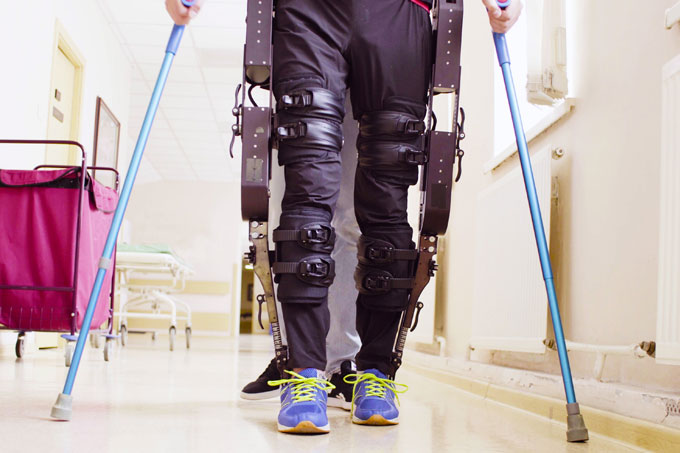Soumya Kanti Manna, Lecturer in Design Engineering, highlights where exoskeletons can be used to support post-stroke rehabilitation.
The World Health Organisation (WHO) has reported that during the last two decades the mortality rate due to stroke has increased. Similar to paralysis, patients suffering from stroke usually lose their muscle functions and such occurrences may lead to loss of power or complete paralysis of limbs if left unused in the acute phase.
Intensive occupational therapy in the early stages can provide superior rehabilitation to the affected limb, however, the process of post-stroke rehabilitation is complex and consists of a series of biomechanical exercises.
Unfortunately, there is a lack of trained staff to provide specialised post-stroke care and the wide range of arm movements required for rehabilitation. It is this gap that the exoskeleton technology aims to fill.
Exoskeletons, which can loosely be described as an external robotic device fitted to a human body, are able to provide paralysed patients with the ability to regain neuro-motor function. This is an extreme adaptation of the technology, exoskeletons have also been developed to substitute the conventional exercises provided by physiotherapists for post-stroke rehabilitation.
Most of the systems developed so far have limitations in their structural configuration, sensory data acquisition and control architecture. Therefore, it is very difficult to facilitate multistage post-stroke exercises using existing exoskeletons for the patients suffering from acute to the last stage after stroke.
My research is focused on designing an innovative concept for developing a support system (Exoskeleton) that can be mounted on the arm to facilitate multistage post-stroke therapy. The device can be operated in three modes (external force, assistive force and resistive force) and meets the requirements of physiotherapists with the great potential to support post-stroke rehabilitation.
With approximately 1.2 million stroke survivors in the UK alone, this technology could make a significant impact on their recovery process.
Soumya Kanti Manna is a Lecturer Design Engineering in the School of Engineering, Technology and Design.
If you are interested in learning more about exoskeleton robotics, and in particular their application to stroke rehabilitation, Soumya Kanti Manna is running a CPD opportunity on 23 October, from 5:30pm – 7pm.
The opportunity is intended for a range of professionals, including senior managers, engineering company owners, operation engineers, technical staff and others.
 Expert comment
Expert comment Jeanette Earl
Jeanette Earl 1327
1327


